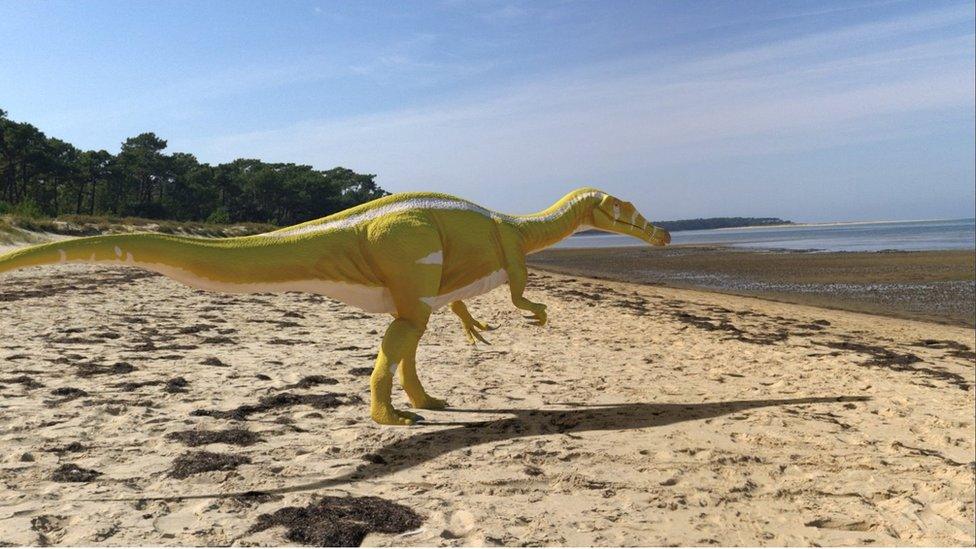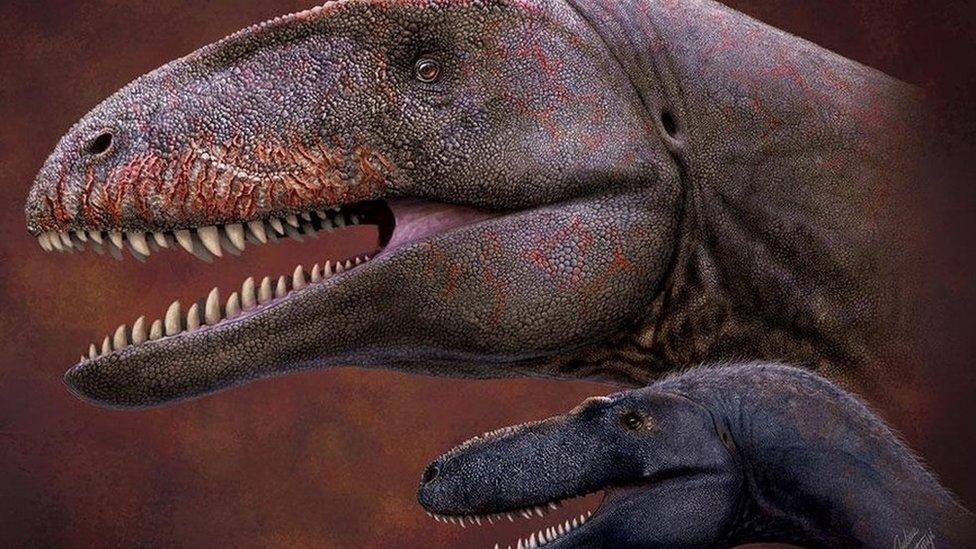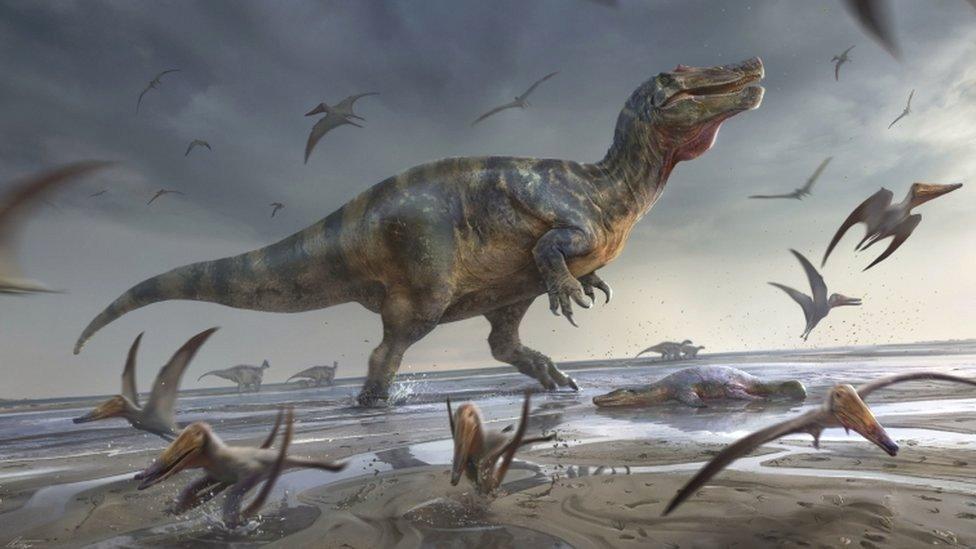Dinosaur: Fossil shows potential new species
- Published

This is what artists think a Protathlitis cinctorrensis would have looked like
Fossil fragments discovered in Spain have shed light on a potentially new species of dinosaur.
It was found in the region of Castellon and has been named Protathlitis cinctorrensis.
Protathlitis is the Greek word for "champion", while cinctorrensis is in reference to Cinctorres, the town where the fossil was found.
The dinosaur is thought to be part of the spinosaurid family, made up of large, meat-eating animals which stand on two feet.
A new study suggests that the Iberian peninsula, a mountainous region contained within Spain and Portugal, may have been somewhere that many of the medium to large-bodied creatures lived.
They are thought to have originated in Europe and then moved to Africa and Asia.
The new finding helps researchers to understand more about their origin and evolution, by comparing it to data they already have about other spinosaurids.
Andres Santos-Cubedo from Jaume I University and his team have analysed fossil fragments - a right jaw bone, one tooth and five vertebrae (bones from the spine).

This is what artists think a Protathlitis cinctorrensis would have looked like
These were discovered previously in the Arcillas de Morella Formation in Spain and thought to be around 127 million years ago.
Based on the remains, the researchers think the dinosaur would have been about 10 to 11 metres long.
The researchers suggest this new species may show that spinosaurids appeared during the Early Cretaceous period, about 126 million years ago, in Laurasia, a large area of land in the northern hemisphere.
There would then have been two sub-groups of the species living in western Europe.
- Published13 September 2021

- Published10 June 2022

